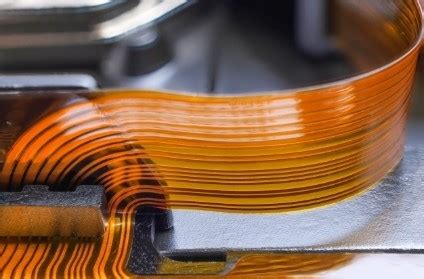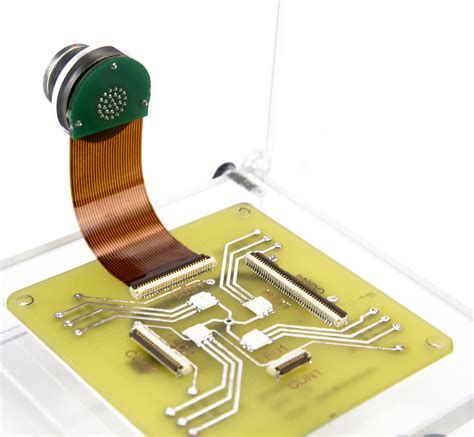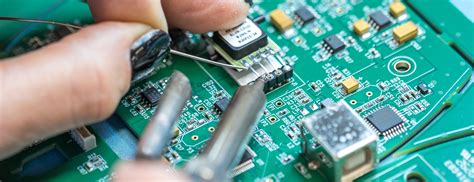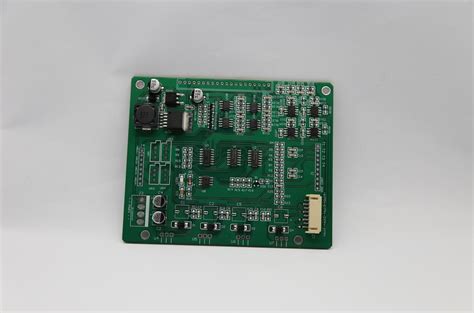Automotive PCB Assembly: Advancing Reliability in Vehicle Electronics
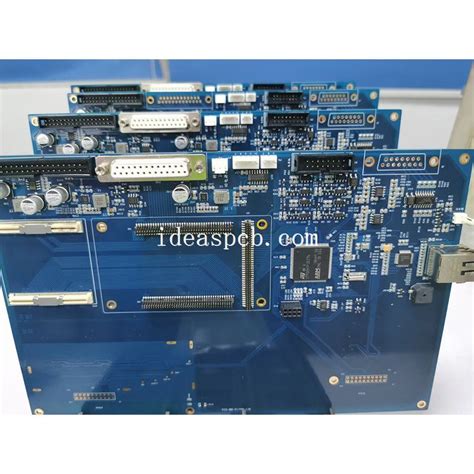
Key Takeaways
Modern automotive PCB assembly processes are foundational to achieving the stringent reliability standards required in vehicle electronics. As vehicles incorporate more safety-critical systems and intelligent functionalities, PCBA (printed circuit board assembly) must balance precision engineering with robust design to withstand extreme environmental conditions. Key considerations include thermal management for high-power components, vibration-resistant soldering techniques, and adherence to automotive-grade certifications like AEC-Q100.
"The integration of automotive PCB assembly into advanced driver-assistance systems (ADAS) demands a zero-defect approach, where even minor flaws can compromise vehicle safety."
Innovations such as embedded trace routing and multilayer PCB assembly enable compact, high-density layouts essential for next-generation infotainment and powertrain control modules. Additionally, the shift toward electric vehicles (EVs) requires PCBA solutions that optimize energy efficiency while handling higher voltage loads. Designers increasingly rely on simulation tools to predict failure points, ensuring PCB assemblies meet 15-year lifespan expectations under harsh operating conditions.
To maintain competitiveness, manufacturers must prioritize automotive PCB assembly processes that align with evolving industry standards, such as ISO 26262 for functional safety. This includes rigorous testing protocols—from thermal cycling to accelerated aging—to validate performance before deployment.

Automotive PCB Assembly Reliability Standards
The automotive industry demands unparalleled reliability from PCB assembly processes, driven by stringent safety and performance requirements. PCBA (Printed Circuit Board Assembly) in vehicles must withstand extreme conditions—from temperature fluctuations (-40°C to 150°C) to vibrations and humidity—while maintaining consistent functionality. To meet these challenges, manufacturers adhere to globally recognized standards such as IPC-6012DA (Automotive Addendum) and AEC-Q200, which define rigorous testing protocols for material selection, thermal management, and solder joint integrity.
| Standard | Key Requirements | Application |
|---|---|---|
| IPC-6012DA | Thermal cycling, mechanical shock resistance | Engine control units, ADAS systems |
| AEC-Q200 | Humidity resistance, vibration testing | Sensors, infotainment modules |
Advanced PCB assembly techniques, including automated optical inspection (AOI) and X-ray testing, ensure defect rates remain below 50 parts per million (PPM). Additionally, conformal coating and high-temperature laminates enhance durability against environmental stressors. By integrating these practices, PCBA providers align with OEM expectations for 15+ year lifespans in modern vehicles, bridging the gap between innovation and mission-critical reliability.
Precision Engineering in Auto PCB Manufacturing
The foundation of reliable automotive PCB assembly lies in precision engineering, which ensures that every PCBA meets stringent performance and safety criteria. Modern vehicles demand circuit boards capable of operating in extreme environments, from temperature fluctuations to vibration-heavy conditions. Advanced manufacturing techniques, such as laser-direct imaging (LDI) and automated optical inspection (AOI), enable micron-level accuracy in trace routing and component placement. These processes minimize defects while optimizing signal integrity and thermal management—critical factors for systems like ADAS (Advanced Driver Assistance Systems) and electric vehicle powertrains.
Material selection further underscores this precision, with high-temperature laminates and halogen-free substrates becoming standard for PCB assembly in automotive applications. Engineers also prioritize design-for-manufacturability (DFM) principles, balancing compact layouts with robust electrical performance. For instance, multilayer PCBA designs integrate embedded passives and controlled impedance traces to reduce electromagnetic interference (EMI). By aligning cutting-edge fabrication technologies with rigorous testing protocols, manufacturers ensure that automotive electronics not only meet today’s reliability benchmarks but also adapt seamlessly to evolving connectivity and autonomy requirements.
Safety Innovations Through Advanced PCB Assembly
Modern vehicles rely on PCB assembly technologies to meet stringent safety requirements, particularly as advanced driver-assistance systems (ADAS) and autonomous functionalities become standard. By leveraging precision PCBA processes, manufacturers integrate high-density interconnects (HDIs) and thermal management solutions that withstand extreme temperatures, vibrations, and humidity. For instance, embedded trace substrates reduce signal loss in critical safety components like collision detection sensors, while conformal coatings protect circuits from contaminants.
A key advancement lies in automotive-grade PCB assembly, which prioritizes failure mode analysis and redundancy design. Multi-layered boards with copper-filled vias enhance current-carrying capacity, minimizing risks of short circuits in power distribution systems. Additionally, automated optical inspection (AOI) and X-ray testing ensure microscopic defects are identified before deployment. These innovations align with ISO 26262 standards, ensuring PCBAs in braking or steering systems operate flawlessly under stress.
As electric vehicles (EVs) adopt higher-voltage architectures, PCB assembly techniques evolve to manage electromagnetic interference (EMI) and arc-resistant materials. By balancing compact layouts with robust insulation, engineers achieve safer integration of battery management systems (BMS) and onboard chargers—proving that advanced PCBA is pivotal to safeguarding both performance and passenger well-being.

Next-Gen Vehicle Electronics PCB Solutions
The evolution of vehicle electronics demands PCB assembly processes that align with emerging technologies such as autonomous driving, electric powertrains, and connected infotainment systems. Modern high-density interconnect (HDI) designs and multilayer PCBA configurations are pivotal in supporting advanced sensor arrays and high-speed data processing. By utilizing thermally stable substrates and copper-clad laminates, manufacturers ensure reliable performance under extreme temperatures and vibrations inherent to automotive environments.
A critical advancement lies in the integration of embedded components within PCB assembly, which reduces footprint while enhancing signal integrity. This shift not only supports miniaturization but also addresses electromagnetic interference (EMI) challenges in densely packed electronic control units (ECUs). Additionally, automated optical inspection (AOI) and X-ray testing during PCBA validate solder joint quality, preventing latent defects that could compromise long-term durability.
As automakers push toward software-defined vehicles, PCB assembly must accommodate over-the-air (OTA) update compatibility and cybersecurity protocols. Innovations like flex-rigid hybrid boards enable adaptable layouts for complex wiring harnesses, while advanced conformal coatings protect against moisture and contaminants. These solutions collectively future-proof vehicle electronics, balancing cutting-edge functionality with the rigorous reliability standards demanded by the automotive industry.

Performance Enhancements via Robust PCB Design
Modern automotive electronics demand PCB assembly designs that prioritize both durability and functionality. By optimizing thermal management and signal integrity, PCBA engineers achieve measurable improvements in vehicle performance. For instance, the integration of high-temperature substrates like ceramic-filled laminates ensures stable operation in extreme environments, while advanced trace routing minimizes electromagnetic interference (EMI) — a critical factor for systems like ADAS (Advanced Driver-Assistance Systems).
A robust design approach also emphasizes layer stack-up optimization, enabling faster data transmission between sensors and control units. This is particularly vital for electric vehicles (EVs), where power distribution networks require PCB assembly solutions capable of handling high currents without voltage drops. Additionally, the use of conformal coatings and automated optical inspection (AOI) during PCBA processes enhances long-term reliability, reducing failure rates in vibration-prone automotive applications.
These innovations not only elevate performance metrics but also align with evolving industry standards, ensuring seamless compatibility with next-generation vehicle architectures. By balancing material science with precision engineering, manufacturers deliver PCB assembly systems that meet the rigorous demands of modern automotive ecosystems.

Automotive PCB Assembly for Durability Demands
Modern vehicles operate in environments characterized by extreme temperatures, vibrations, and exposure to moisture, demanding PCB assembly processes that prioritize longevity. To meet these challenges, manufacturers employ high-Tg (glass transition temperature) substrates and thermally conductive materials to ensure stability under thermal stress. Advanced PCBA techniques, such as conformal coating and selective soldering, further enhance resistance to corrosion and mechanical fatigue.
The integration of robust trace routing and reinforced solder joints in automotive PCB assembly minimizes failure risks in critical systems like engine control units (ECUs) and ADAS modules. Rigorous testing protocols, including thermal cycling and vibration simulation, validate designs against industry standards such as IPC-6012DA. By balancing material innovation with precision manufacturing, PCBA solutions deliver the resilience required for 10+ year vehicle lifecycles, aligning with automakers’ demands for reliability in electrified and autonomous platforms.
Transitioning seamlessly from safety innovations, this focus on durability underscores how PCB assembly serves as the backbone of next-generation automotive electronics, ensuring performance without compromising structural integrity.
Optimizing Vehicle Electronics with PCB Technology
The integration of PCB assembly (PCBA) into modern vehicles is reshaping how automotive systems balance performance, space efficiency, and reliability. As vehicle electronics grow more complex—from advanced driver-assistance systems (ADAS) to infotainment networks—PCBA serves as the backbone for ensuring seamless communication between components. By leveraging precision manufacturing techniques, such as automated optical inspection (AOI) and surface-mount technology (SMT), automakers achieve tighter component placement, reducing signal interference and enhancing processing speeds.
A critical focus in automotive PCB assembly lies in thermal management, where materials like high-temperature laminates and copper substrates dissipate heat effectively, preventing performance degradation in harsh operating environments. Additionally, optimized trace routing minimizes electromagnetic interference (EMI), a vital consideration for safety-critical applications like brake control modules.
The shift toward electric vehicles (EVs) further underscores the role of PCBA in power electronics, where robust designs support higher voltage demands while maintaining compact form factors. By aligning with industry standards such as IPC-A-610 and IATF 16949, manufacturers ensure that PCB assemblies meet stringent automotive-grade durability requirements. This synergy between innovation and reliability positions PCB technology as a cornerstone in the evolution of smarter, safer, and more efficient vehicles.
Future-Proofing Auto Electronics via PCB Innovation
The rapid evolution of automotive technology demands PCB assembly solutions that not only meet current requirements but also anticipate future challenges. As vehicles transition toward electrification, autonomous driving, and connected ecosystems, PCBA designs must integrate scalable architectures and adaptive manufacturing processes. Innovations such as high-density interconnect (HDI) designs and flexible substrates enable compact layouts while supporting advanced functionalities like sensor fusion and AI-driven control systems.
To ensure longevity, manufacturers are adopting materials with enhanced thermal stability, such as ceramic-filled laminates, which withstand extreme temperatures common in electric vehicle (EV) battery management systems. Additionally, automotive PCB assembly now prioritizes modular designs, allowing seamless upgrades as software-defined features evolve. This approach aligns with industry standards like IPC-6012DA, which governs reliability for harsh automotive environments.
By embedding predictive analytics into PCBA testing protocols, defects are identified earlier, reducing failure risks over a vehicle’s lifespan. Such innovations not only address today’s demands but also create a foundation for integrating emerging technologies, from 5G connectivity to next-gen LiDAR systems. As a result, PCB assembly becomes a critical enabler of future-ready vehicle platforms, balancing performance, durability, and adaptability in an era of relentless technological advancement.

Conclusion
The evolution of automotive PCB assembly underscores its pivotal role in shaping the future of vehicle electronics. By adhering to stringent reliability standards and leveraging PCBA innovations, manufacturers are delivering solutions that meet the rigorous demands of modern automotive systems. Precision-engineered designs not only enhance thermal stability and vibration resistance but also integrate advanced safety protocols, ensuring seamless performance in extreme conditions.
As vehicle systems grow more complex, the emphasis on PCB assembly durability becomes critical. Innovations such as high-density interconnects and robust material selection are setting benchmarks for longevity and error-free operation. These advancements align with the industry’s shift toward electric and autonomous vehicles, where PCBA technology must balance miniaturization with uncompromised functionality.
Looking ahead, continuous improvements in automotive PCB assembly will remain central to optimizing vehicle electronics. By prioritizing scalability and adaptive manufacturing processes, the sector can future-proof systems against emerging challenges. This relentless focus on innovation ensures that PCB assembly will continue to drive safety, efficiency, and performance in next-generation automotive applications.
Frequently Asked Questions
What distinguishes automotive PCB assembly from standard PCB manufacturing?
Automotive PCB assembly requires adherence to stricter reliability standards, such as ISO/TS 16949, to withstand extreme temperatures, vibrations, and humidity. Unlike consumer electronics, automotive-grade PCBA integrates redundancy features and advanced materials like high-Tg substrates for long-term durability.
How does precision engineering improve safety in vehicle electronics?
Precision in PCB assembly ensures flawless solder joints, minimized signal interference, and optimized thermal management. These factors directly enhance functional safety in systems like ADAS and powertrain controls, reducing risks of component failure in critical scenarios.
What innovations are shaping next-gen automotive PCBA designs?
Emerging trends include embedded components for space efficiency, flexible PCBs for complex layouts, and AI-driven quality inspection systems. Such advancements enable faster data processing and tighter integration with electric vehicle (EV) architectures.
Why is thermal management critical in automotive PCB assemblies?
High-power components in EVs generate significant heat, which can degrade performance. PCBA designs incorporate thermal vias, heat sinks, and ceramic substrates to dissipate heat efficiently, ensuring stable operation under extreme environmental conditions.
How do manufacturers test PCB reliability for automotive applications?
Rigorous testing includes thermal cycling (-40°C to 150°C), vibration simulations, and accelerated lifespan assessments. These protocols validate resilience against mechanical stress and environmental factors, aligning with AEC-Q100/Q101 standards.
Explore Custom Automotive PCB Solutions Today
For tailored PCB assembly services that meet stringent automotive requirements, please click here to connect with our engineering team.


